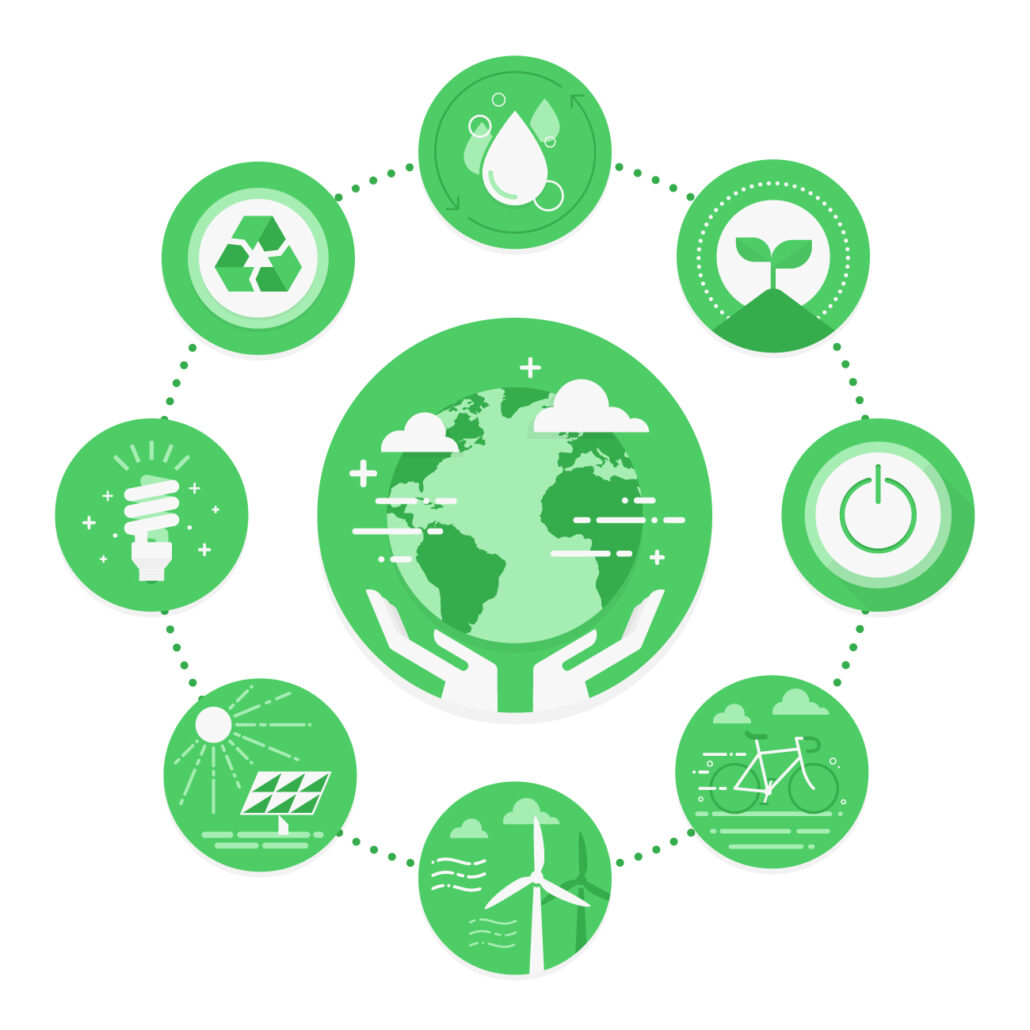Written by Niki Tsani, Administrative Assistant at Wattcrop.
The circular economy is a concept that promotes sustainability by focusing on the reduction, reuse, and recycling of materials and products to minimize waste and environmental impact. When applied to the renewable energy sector, it involves sustainable practices for the recycling and repurposing of components used in renewable energy technologies. This approach is crucial to ensure that the transition to renewable energy sources does not create new environmental challenges.
Here are some key aspects of the circular economy in renewable energy, with a focus on sustainable practices for component recycling and repurposing:
Recycling of Solar Panels: Solar panels have a limited lifespan, typically around 25-30 years, after which they can lose efficiency. Recycling of solar panels involves the collection and processing of end-of-life panels to recover valuable materials like silicon, aluminum, and glass. These materials can be used to manufacture new panels or other products.
Wind Turbine Blade Recycling: Wind turbine blades are made of composite materials that are challenging to recycle. Sustainable practices involve developing technologies to break down and reuse the materials from decommissioned blades. Researchers are exploring various methods, such as chemical processes and mechanical recycling, to address this issue.

Battery Recycling: Energy storage systems, including batteries used in renewable energy applications, require recycling to recover valuable materials and minimize environmental impact. Recycling lithium-ion batteries, for example, can extract and reuse materials like lithium, cobalt, and nickel, reducing the demand for mining and the environmental impact of battery production.
Repurposing Components: Instead of recycling components entirely, repurposing can extend the useful life of renewable energy system elements. For example, repurposing old wind turbines for smaller-scale applications or reusing components in different industries can be sustainable alternatives.
Research and Innovation: Continued research and innovation are essential to improving recycling technologies and finding new ways to repurpose renewable energy components. Investments in research can drive advancements in sustainability within the industry.
As we navigate the global shift towards renewable energy, it is imperative to recognize that sustainability goes hand in hand with technological progress. By adhering to circular economy principles, the renewable energy sector can not only mitigate its environmental footprint but also serve as a model for industries seeking to balance progress with ecological responsibility. Ultimately, the circular economy provides a framework through which the renewable energy sector can harmonize economic growth with environmental stewardship, paving the way for a greener and more sustainable energy future.
Read more interesting articles by the Wattcrop team!

